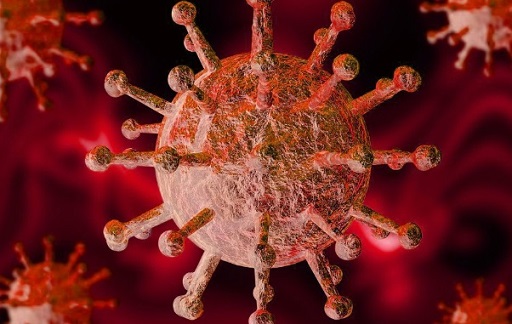Hidden Human Genes That Helps SARS-CoV-2 Invade Tissues That Do Not Even Have ACE2 Receptors
Nikhil Prasad Fact checked by:Thailand Medical News Team Jul 20, 2025 5 months, 2 weeks, 2 days, 11 hours, 21 minutes ago
Thailand Medical News: Scientists Discover Two Key Human Proteins That Help SARS-CoV-2 Infect More Than Just the Lungs
A groundbreaking study led by researchers from Stanford University School of Medicine, Nanjing Medical University in China, the University of California San Francisco, Louisiana State University, Princeton University, Cornell University, and the Chan Zuckerberg Biohub has uncovered two hidden accomplices inside our own cells that may help SARS-CoV-2 spread through many organs in the body.
 Hidden Human Genes That Helps SARS-CoV-2 Invade Tissues That Do Not Even Have ACE2 Receptors
Hidden Human Genes That Helps SARS-CoV-2 Invade Tissues That Do Not Even Have ACE2 Receptors
While scientists have long known that the virus causing COVID-19 attaches to a protein called ACE2 to enter cells—mostly in the lungs—this new research has revealed that other lesser-known proteins in human cells can assist the virus too. This
Thailand Medical News report focuses on two specific proteins: LGMN (legumain) and KCNA6, a potassium ion channel. These proteins, when overproduced in laboratory cells, made the cells more vulnerable to infection—even in tissues with low or nearly absent ACE2.
The Hunt for Viral Entry Points
Using a technique called CRISPR activation (CRISPRa), the researchers systematically turned on over 6,000 human membrane genes in lab-grown cells to see which ones made the virus more effective at entering. This method allowed the team to simulate gene activation seen in various parts of the human body. What they found was alarming—certain tissues, such as the nose, gut, brain, and even immune cells, contain proteins that might unknowingly act as gatekeepers for the virus.
LGMN, a protease usually found in endosomes and lysosomes, was shown to significantly increase infection when overexpressed. More interestingly, this protein’s effect was only seen when it was located on the cell surface and active. Similarly, KCNA6, found in nasal tissues and the brain, also boosted infection, especially in cells with minimal ACE2.
Blocking These Helpers Shows Hope
The team then explored whether blocking these proteins could reduce infection. Using known drugs, such as 3,4-diaminopyridine (an FDA-approved potassium channel inhibitor) and RR-11a (a legumain inhibitor), they managed to reduce viral entry in lab cells. The findings suggest that these proteins could become drug targets in the future.
Further clinical data analysis of over 7.8 million Medicare patients showed that certain drugs already used for other diseases—like antidepressants, anticonvulsants, and diuretics—might also interfere with these proteins and reduce COVID-19 hospitalization risks.
Why This Matters
This study helps explain how the virus can spread far beyond the lungs—into the brain, intestines, or even immune cells—leading to the wide range of symptoms seen in COVID-19 and Long COVID. By identifying new ways the virus enters our cells, scientists now have more pot
ential drug targets to fight future infections or variants that escape current vaccines and antibody treatments.
The findings also raise awareness that the virus can hijack common cellular pathways in various organs, making it critical to look beyond ACE2 in understanding and managing COVID-19.
The study findings were published in the journal: PLOS Pathogens
https://journals.plos.org/plospathogens/article?id=10.1371/journal.ppat.1013157
For the latest COVID-19 News, keep on logging to
Thailand Medical News.
Read Also:
https://www.thailandmedical.news/news/sars-cov-2-envelope-protein-found-to-damage-lung-barrier-and-fuel-severe-inflammation
https://www.thailandmedical.news/news/study-finds-that-sars-cov-2-nsp15-suppresses-type-i-interferon-production-by-inhibiting-irf3-phosphorylation-and-nuclear-translocation
https://www.thailandmedical.news/news/news-covid-19-university-of-california-study-explains-why-covid-19-increases-risk-of-strokes
